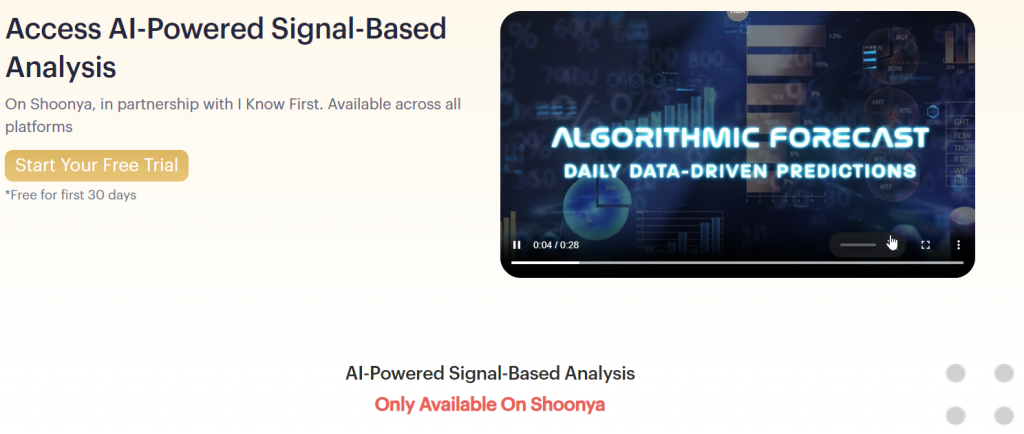Top 10 Tips For The Management Of Risk For Stock Trading Using Ai, From Penny To copyright
The importance of focusing on risk management is essential to ensure the success of AI stock trading, especially in highly risky markets like penny stocks and cryptocurrencies. Here are ten tips for incorporating efficient risk management practices into your AI trading strategy:
1. Define Risk Tolerance
Tips. Establish an explicit maximum loss limit for each trade for daily drawdowns or for total portfolio losses.
What can you do? When you know the risk level You can set the best parameters for the AI-powered trading system.
2. Automate Stop-Loss and Take-Profit Orders
Tips: Make use of AI to adjust dynamically and implement stop-loss, take-profit and profit levels based on market volatility.
What’s the reason? Automated protections limit potential losses without emotional interference.
3. Diversify Your Portfolio
Spread your investments over multiple sectors, assets and markets.
Why: Diversification balances the risk of losing and gains by limiting exposure to a specific asset’s risk.
4. Set Position Sizing Rules
Make use of AI to determine the dimensions of your position using:
Portfolio size.
Risk per trade (e.g., 1-2 percentage of portfolio value).
Asset volatility.
A properly sized position helps prevent overexposure to high risk trades.
5. Monitor Variability and Adjust Strategies
Tip: Monitor market volatility by using indicators such as the VIX (stocks) and on-chain data, or other measures.
Why is this: Increased volatility requires tighter risk control and adaptive strategies.
6. Backtest Risk Management Rules
Incorporate risk management parameters such as stop-loss levels and positions in backtests to evaluate.
Why? Testing will ensure that your risk management strategies are able to be implemented in different market conditions.
7. Implement Risk-Reward Ratios
Tips. Make sure that each trade has the right risk-reward such as 1:3 (1:3 = $1 at risk x $3 gain).
Why? Consistently making use of favorable ratios can increase long-term profit, despite sometimes-infrequent loss.
8. AI Detects and Responds to Anomalies
Tip: Use algorithms that detect anomalous trading patterns to spot sudden increases in price or volume.
The reason is that early detection enables you to exit trades or alter strategies prior to a significant market move.
9. Hedging Strategies: Incorporate Hedging Strategies
Strategies for hedges such as options or futures can be used to limit risk.
Penny stocks are hedges your portfolio using ETFs for the sector, or other assets that are linked to the industry.
copyright: hedge with stablecoins or ETFs with inverses.
Why hedge against price fluctuations?
10. Periodically monitor and adjust risk Parameters
Always review your AI trading system risk settings and make adjustments when the market is changing.
Why: Dynamic risk-management ensures that your plan is relevant across different market conditions.
Bonus: Use Risk Assessment Metrics
Tip: Evaluate your strategy using metrics like:
Max Drawdown: Maximum portfolio fall from the top to the bottom.
Sharpe Ratio: Risk-adjusted return.
Win-Loss Ratio: Quantity of profitable trades versus losses.
Why: These metrics offer an insight into the effectiveness of your strategy and exposure to risk.
You can enhance your AI trading strategies’ efficiency and safety by implementing these suggestions. Have a look at the most popular ai stock prediction tips for more info including ai stock trading bot free, best stock analysis app, ai for copyright trading, best ai stocks, ai for copyright trading, ai stock trading bot free, ai trading software, smart stocks ai, best ai trading app, smart stocks ai and more.

Top 10 Tips For Leveraging Ai Backtesting Software For Stock Pickers And Forecasts
It is crucial to utilize backtesting in a way that allows you to enhance AI stock pickers and improve predictions and investment strategy. Backtesting lets AI-driven strategies be tested under past markets. This gives an insight into the efficiency of their plan. Here are 10 top ways to backtest AI tools for stock-pickers.
1. Utilize historical data that is of high quality
Tips. Be sure that you are making use of accurate and complete historical data, including volume of trading, prices for stocks and earnings reports, dividends, or other financial indicators.
The reason: High-quality data guarantees that backtesting results reflect realistic market conditions. Incomplete or incorrect data may lead to false results from backtesting that could affect your strategy’s credibility.
2. Include Realistic Trading Costs and Slippage
Backtesting can be used to simulate real trading costs like commissions, transaction charges, slippages and market impacts.
Reason: Not accounting for the possibility of slippage or trade costs can overestimate the potential returns of your AI. Incorporating these factors will ensure that your backtest results are more akin to real-world trading scenarios.
3. Tests to test different market conditions
Tip Backtesting your AI Stock picker to multiple market conditions such as bear markets or bull markets. Also, you should include periods of high volatility (e.g. the financial crisis or market corrections).
What’s the reason? AI algorithms could perform differently under various market conditions. Testing under various conditions can help to ensure that your strategy is adaptable and robust.
4. Test with Walk-Forward
Tip Implement a walk-forward test which test the model by evaluating it using a a sliding window of historical information, and testing its performance against data not included in the sample.
What is the reason? Walk-forward tests can help evaluate the predictive capabilities of AI models that are based on untested evidence. It is an more precise measure of real world performance than static backtesting.
5. Ensure Proper Overfitting Prevention
Tips: To prevent overfitting, you should test the model with different time frames. Check to see if it doesn’t make noises or anomalies based on the past data.
Why? Overfitting occurs if the model is too closely focused on the past data. In the end, it is less effective at predicting market movement in the future. A model that is balanced should generalize to different market conditions.
6. Optimize Parameters During Backtesting
Utilize backtesting to refine important parameters.
The reason: Optimizing the parameters can boost AI model performance. As mentioned previously it is crucial to make sure that the optimization does not result in an overfitting.
7. Drawdown Analysis and Risk Management Incorporate them
Tip: Include methods to manage risk including stop losses Risk to reward ratios, and positions size during backtesting to test the strategy’s resiliency against drawdowns that are large.
Why: Effective management of risk is crucial to long-term success. Through simulating how your AI model does when it comes to risk, it’s possible to spot weaknesses and modify the strategies to achieve better risk adjusted returns.
8. Analyze key Metrics Beyond Returns
It is crucial to concentrate on other performance indicators that are more than simple returns. They include the Sharpe Ratio, maximum drawdown ratio, win/loss percentage, and volatility.
These metrics can assist you in gaining an overall view of returns from your AI strategies. If you solely focus on the returns, you might miss periods that are high in volatility or risk.
9. Test different asset classes, and develop a strategy
Tip Use the AI model backtest using different asset classes and investment strategies.
Why is it important to diversify the backtest across various asset classes allows you to assess the scalability of the AI model, and ensures that it works well across multiple types of markets and investment strategies, including high-risk assets like copyright.
10. Update Your backtesting regularly and improve the method
Tips: Continually update the backtesting model with updated market information. This ensures that it is updated to reflect market conditions, as well as AI models.
Why Markets are dynamic as should your backtesting. Regular updates ensure that the results of your backtest are accurate and that the AI model continues to be effective even as changes in market data or market trends occur.
Use Monte Carlo simulations to evaluate risk
Tip: Monte Carlo Simulations are an excellent way to simulate the many possibilities of outcomes. You can run several simulations, each with a distinct input scenario.
What’s the reason: Monte Carlo simulators provide greater insight into the risk involved in volatile markets such as copyright.
Following these tips can aid you in optimizing your AI stock picker using backtesting. Thorough backtesting assures that the investment strategies based on AI are reliable, robust and flexible, allowing you make better informed choices in highly volatile and dynamic markets. See the most popular ai for stock trading examples for website advice including penny ai stocks, ai in stock market, stocks ai, ai stock trading, trade ai, ai penny stocks to buy, ai investing platform, ai investing platform, ai stock, using ai to trade stocks and more.

Leave a Reply